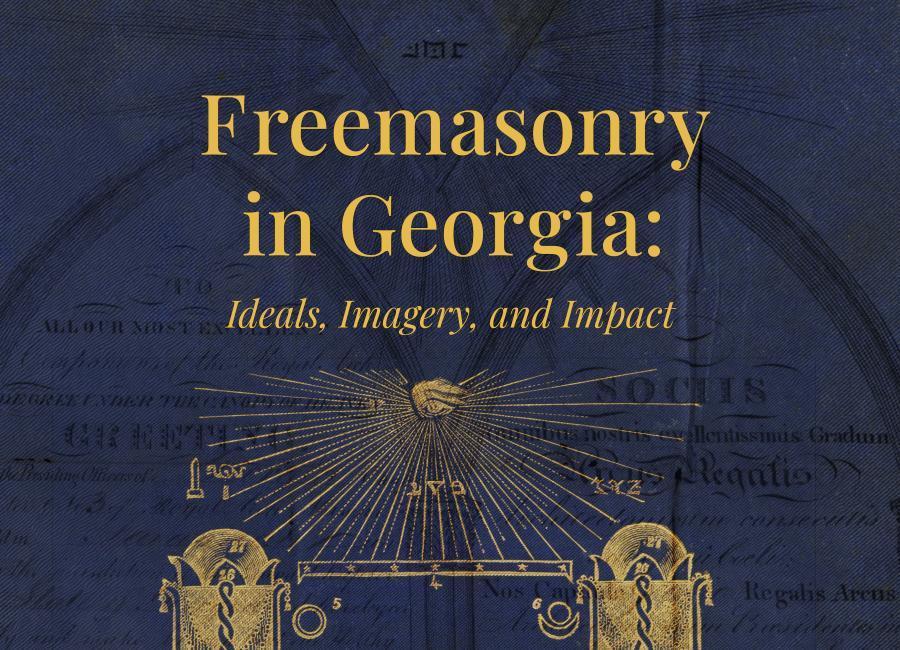Freemasonry was a new social organization when it emerged around 1720 in England with the founding of its authoritative body, Grand Lodge. Initially it was a secret society for men of varied backgrounds who met in lodges to improve themselves through enlightened practices of fraternity, liberty, tolerance, and benevolence. Rich in humanist learning and visual traditions, the fraternity evolved and spread across the globe thanks to British imperialism and new orders and rites that included women and people of color. Nowhere did it enjoy more respectability than in the United States. Never entirely secret, freemasonry contributed in visible ways to American culture and values, and its particular terminology entered everyday speech.
This exhibition explores the ideals, imagery, and impact of freemasonry in Georgia. The physical materials displayed demonstrate the ambitions and tensions that existed within freemasonry. Organized in three sections that parallel the masonic symbol of the three columns of Strength, Wisdom, and Beauty, these materials are interpreted in their masonic significance as well as from a modern, critical perspective.

